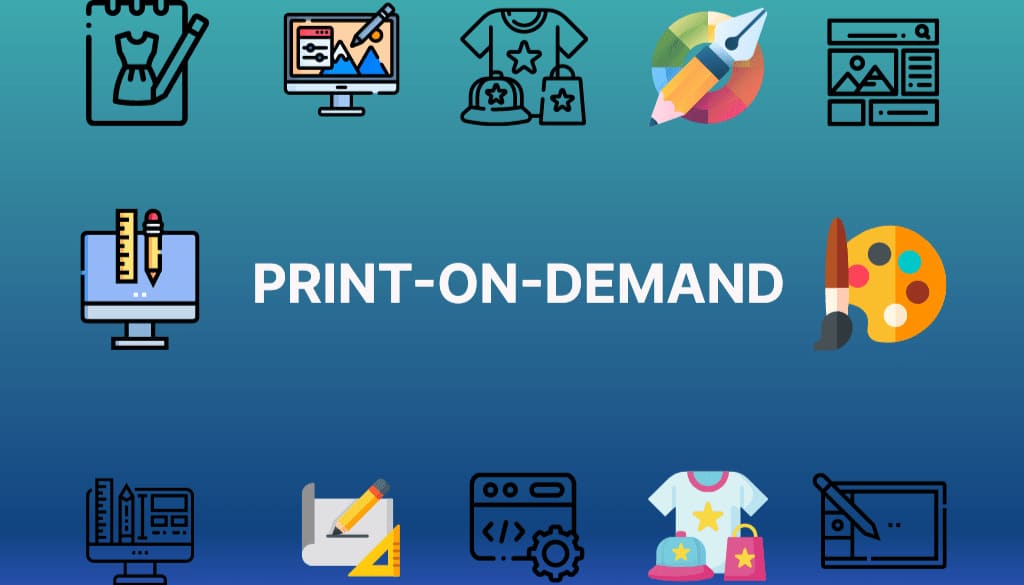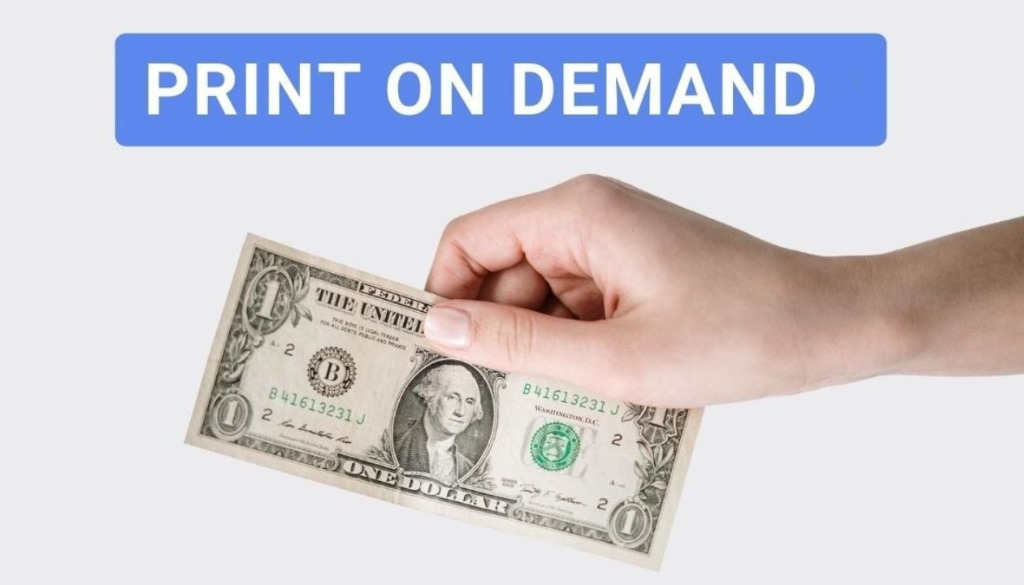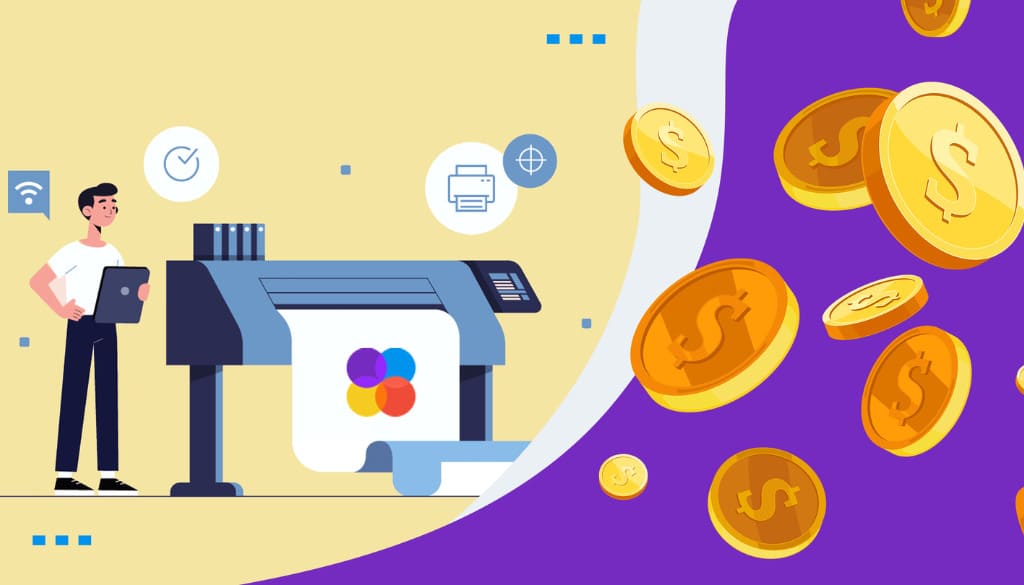The Print on Demand (POD) business model is rapidly becoming an appealing online money-making (MMO) trend, especially for sellers who are new to the e-commerce field. But what exactly is the POD model? How can you effectively start making money with POD while avoiding unnecessary risks? Let’s explore everything you need to know with FlashShip in the article below!
Introduction to the POD Business Model
Print on Demand (POD) is an e-commerce business model that allows you to sell customized products featuring your unique designs.
Learn more at: POD business model
How Does POD Work?

To effectively earn money with POD, you first need to understand its simple operating principles:
-
Step 1: Product Design
- You create product designs yourself or hire a professional designer. Common products include t-shirts, hoodies, mugs, posters, phone cases, etc.
-
Step 2: Upload the Design File to POD Platforms
- You upload your designs to POD platforms or partners (such as FlashShip, Printify, Printful). These platforms store your designs and showcase the products on your website or online store.
-
Step 3: Sell Products
- When customers place orders on your online store, the orders are automatically forwarded to the POD provider.
-
Step 4: Produce & Ship the Products
- The POD partner produces (prints) the product based on your customer’s order and ships it directly to your customer under your own brand.
-
Step 5: Earn Profits
- You receive the profit, which is the difference between your selling price and the base cost charged by the POD supplier.
Ways to Earn Money with the POD Business Model
There are several strategies to generate income from POD, depending on your goals and available resources.

1. Selling on Marketplaces
This is the easiest approach for beginners because you can leverage the massive built-in traffic of marketplaces.
- Etsy: A goldmine for unique, handmade, and personalized products. Etsy has a large community of buyers ready to pay for creative designs. To succeed on Etsy, focus on keyword research (SEO for Etsy) and create attractive product mock-ups.
- Amazon Merch on Demand: An Amazon program allowing you to sell products (mainly T-shirts) directly on this platform. Being listed on Amazon provides credibility and a vast customer reach. However, the account approval process is quite rigorous.
- Redbubble, Teespring, Society6: These marketplaces function as social networks for artists and designers. You only need to upload your designs, and the platform handles the rest. The profit margins may be lower, but the barriers to entry are minimal.
2. Building Your Brand
This approach is more long-term and sustainable. By creating your own website on platforms such as Shopify or WooCommerce and partnering with a POD provider like FlashShip, you have complete control over your brand.
Advantages:
- Build your own brand equity.
- Full control over customer experience, pricing, and policies.
- Higher profit margins since there’s no marketplace fee deduction.
- Easy access to customer data (emails, behaviors) for retargeting marketing campaigns.
Challenges:
- You must drive your own traffic to your website through paid advertising (Facebook Ads, Google Ads), SEO, content marketing, etc.
- Ongoing costs of maintaining a website (monthly Shopify fees, app subscriptions).
3. Combining Both Approaches
Many successful sellers start by selling on marketplaces to test ideas and generate initial cash flow. Once they’ve identified winning designs and clearly understand their target customers, they build their own Shopify store to maximize profits and sustainably grow their brand.
Factors Determining Your Success with POD
Simply uploading a design and expecting money to roll in is a common misconception. To achieve genuine success, you need to invest time and effort into these key elements:

1. Market Niche Research
This is the most critical step, determining up to 80% of your success. Rather than selling generic-themed products like “I love dogs,” you should dig deeper.
What defines a good niche?
- Passionate and Loyal Audience: Customers in niche markets are willing to spend money on products that reflect their passions (e.g., Corgi lovers, hikers, nurses, etc.).
- Sufficiently Large, Yet Low Competition: Utilize tools like Google Trends, online forums, Facebook groups, and Reddit to evaluate demand.
- Expansion Potential: From the niche of “Corgi lovers,” you can expand to related products for dog owners or other dog breeds.
Tools for print on demand niches research:
- Etsy & Amazon: Use keyword searches and study “bestseller” products.
- Pinterest: A massive visual search engine for discovering trends and interests.
- Analytical Tools: Everbee, Sale Samurai (Etsy), Merch Informer (Amazon).
2. Creative and Trendy Designs
Your design is the “soul” of a POD product. You don’t necessarily have to be a professional designer.
Sources of Inspiration:
- Social Media: Follow trends on TikTok, Instagram, and Pinterest.
- Competitors: Analyze best-selling designs from other stores. (Note: Only seek inspiration, never copy.)
- 2025 Design Trends: Nostalgic styles (Y2K, 90s), minimalism, abstract art, and personalized products are booming.
Easy-to-use design tools:
- Canva: Powerful and user-friendly with a huge resource library.
- Kittl, Placeit: Provide professional templates and mockups specifically for POD.
- Hiring Designers: Platforms like Fiverr, Upwork, or local designer groups.
Important: Always pay attention to copyright and trademark issues. Never use images of celebrities, brand logos, or movie characters without permission.
3. Multichannel Marketing and Sales
Having great designs is useless if no one sees them.
Search Engine Optimization (SEO):</h4
Research niche-specific keywords and strategically integrate them into your product titles, descriptions, and tags on Etsy, Amazon, etc.
Social Media Marketing:
- Pinterest: Build thematic boards and create high-quality product pins. It’s a powerful, long-term, and “free” POD marketing channel.
- Facebook & Instagram: Run targeted ads based on interests and behaviors. Create engaging product videos and reels.
- TikTok: Short-form videos and viral trends can help your products gain overnight popularity.
- Email Marketing: Build customer email lists to send promotional offers, introduce new products, and foster lasting relationships.
4. Choosing a Reliable Fulfillment Partner
Your POD provider is the backbone of your business. Product quality and shipping speed directly impact customer satisfaction and your brand reputation.
Selection Criteria:
- Print and Product Quality: Always order samples to verify quality personally.
- Turnaround Time: Crucial if targeting international markets like the US. Quick delivery times boost conversion rates and customer satisfaction.
- Base Cost: Competitive pricing ensures better profit margins.
- System & Integration: User-friendly platforms that seamlessly integrate with your sales channels (Shopify, Etsy, etc.).
- Customer Support: Quick response and effective problem resolution.
Risks and Challenges in POD

Despite its advantages, POD is not a bed of roses. You need to identify and prepare for the following challenges:
- High Competition: Due to low entry barriers, the POD market is highly crowded.
- Solution: Find deep niches and build a distinctive, story-driven brand instead of competing solely on price.
- Lower Profit Margins per Product: Individual item production costs are higher compared to bulk orders.
- Solution: Optimize pricing strategies, use upselling (selling higher-value products), and cross-selling (selling related items). Building a strong brand allows higher pricing.
- Dependence on Suppliers: Product quality and shipping times are beyond your direct control.
- Solution: Choose reputable fulfillment partners like FlashShip, thoroughly read reviews, always order samples, and have backup plans.
- Customer Service Management: Dealing with complaints regarding product quality, delayed deliveries, and incorrect designs.
- Solution: Create clear return and refund policies. Communicate proactively and transparently with customers. Maintain close collaboration with your POD supplier’s support team.
- Copyright and Trademark Issues: Risk of account suspension or legal actions if copyright is violated.
- Solution: Create original designs or buy commercially licensed designs. Always use trademark checking tools before selling products.
POD is an attractive business model with low startup costs and minimal risk, ideal for new sellers entering the online market. However, to achieve sustainable long-term success, it’s essential to thoroughly research your market, craft unique designs, and select reputable production partners.
We hope this article from FlashShip has provided you with all the necessary insights and confidence to embark effectively on your POD journey. Stay tuned to our website for more valuable updates, and we wish you great success in your POD business!
Please see more:

Leave a Reply